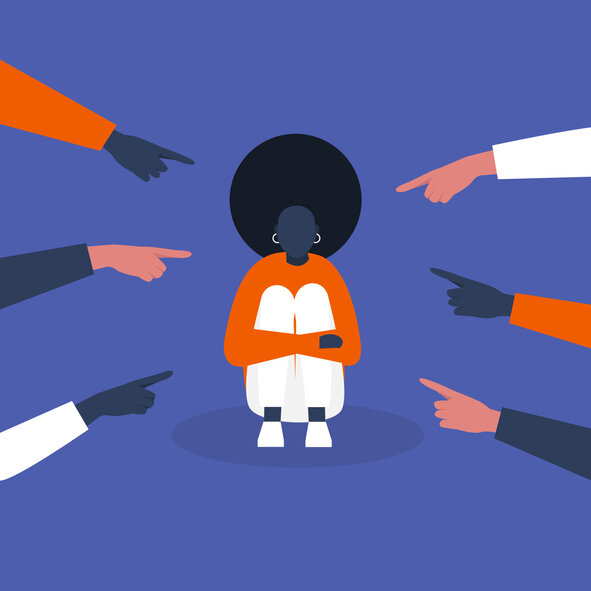Racial biases in schools impact the students learning experience and how teachers perform in the classroom.
On May 25, in Minneapolis, United States, George Floyd died at a white policeman’s hands, which sparked protests around the world against racism in a movement called Black Lives Matter.
Although this movement has existed since 2013, it has gained new momentum due to recent events, showing the strength of the racism that still exists in the police system, the government, and society.
Among the areas most vital to addressing racism in society are the schools, given that schools can perpetuate racial inequality, so it is important to train the educators on how to address this issue in the classroom.
Coincidentally, one month before the murder, the American Educational Research Association (AERA) surveyed to examine teachers’ racial bias. As the survey explains, schools are places where equality should be promoted and taught to the students should be taught, but this is not always the case. So, the Association sought to determine if educators have less explicit and implicit pro-white prejudices than the non-teaching community. The survey included the participation of 1.6 million people, of whom 68,930 were teachers.
Jordan Starck, the author of the study, explains that schools are a “microcosm of society,” so racism can affect things such as hiring teachers and the co-mingling in the schools among students of different ethnicities.
AERA conducted a speed and accuracy test where the participants separated white-skinned people with positive words and those of dark skin with negative words. 77% of the educators turned out to have an implicit bias, while 77.1% of white people surveyed have this prejudice. Afterward, the researchers discovered that 30.3% of teachers have explicit bias vs. 30.4% of professionals who are not educators.
Having these racial biases in schools influences students’ experience in their learning process, in the quality of education they receive, and how the teachers manage them in the classroom.
Previous studies have shown that the students who encountered racial prejudice were not only found to be less likely to be put in advanced or gifted classes but, on the contrary, they were the ones who received the most detentions and punishments, especially when their teachers were white people.
“The teachers’ bias levels correlate to student outcomes; the more biased the teachers are, the worse are the students’ learning results,” Starck said. “The teachers perceive, evaluate, and treat the students differently based on their ethnicity, and bias plays a central role in those disparities.”
Also, Starck points out that having “good intentions” is not enough, and that it is not his intention for teachers to feel guilty. Still, such studies are necessary to shine a light on the need for other resources and support to manage racial biases.
Stark invites the school leaders and principals to support teachers’ professional development to address their prejudices and avoid that these affect their students. Many school districts have initiated actions in this regard by offering teachers training so that they are more aware of their implicit and explicit bias and learn how to change them. Experts explained that this type of personal development and professional training where the teachers are asked to examine themselves and act is not traditionally done.
It is also necessary to facilitate conversations about this introspection and how racism is manifested in the institution’s policies and processes. Also, the students should be analyzed, and the questions asked: What are their grades? Do they attend class? How is their self-discipline? Do they stay out of school a lot? Are there differences according to ethnicity and gender?
On the other hand, Forbes Magazine considers that the best way to eradicate racism is to change education, starting with including in the history books characters of different ethnicities. Also, adding the discussion of slavery in the curricula and changing schools’ names that have historical characters who trafficked slaves or had racist backgrounds.
Also, some studies show that teachers systematically discount black students compared to other ethnic groups. They are overrepresented in student “reform” schools, where they are excluded from traditional institutions and are exposed to drugs and drug traffickers.
They are also discriminated against because of their hair and may have fewer opportunities to enter and complete higher education. This results in a gap in opportunities between black people compared to white persons and other ethnicities, alienating them and limiting their professional growth opportunities.
Although there is no easy way to eliminate systemic racism in the Education sector, as in the AERA research, Forbes recommends beginning by educating teachers about their prejudices. It is also important to hire more black teachers to give them more representation; include more books by authors of different ethnicities to tell stories led by diverse protagonists, and seek positive actions in higher education that attract more students of all ethnicities.
Participation by the Government, school leaders, teachers, and the education community is also necessary to bring about real change. As Jordan Starck stated, “It is necessary to advocate for broader social changes, or the same kinds of prejudices will be perpetuated.”
This article from Observatory of the Institute for the Future of Education may be shared under the terms of the license CC BY-NC-SA 4.0 
)
)


)